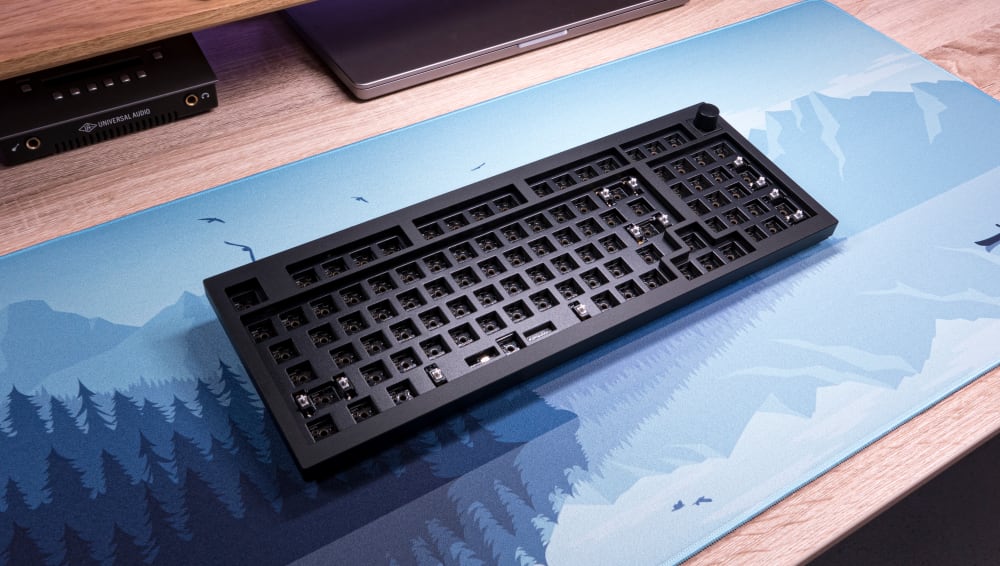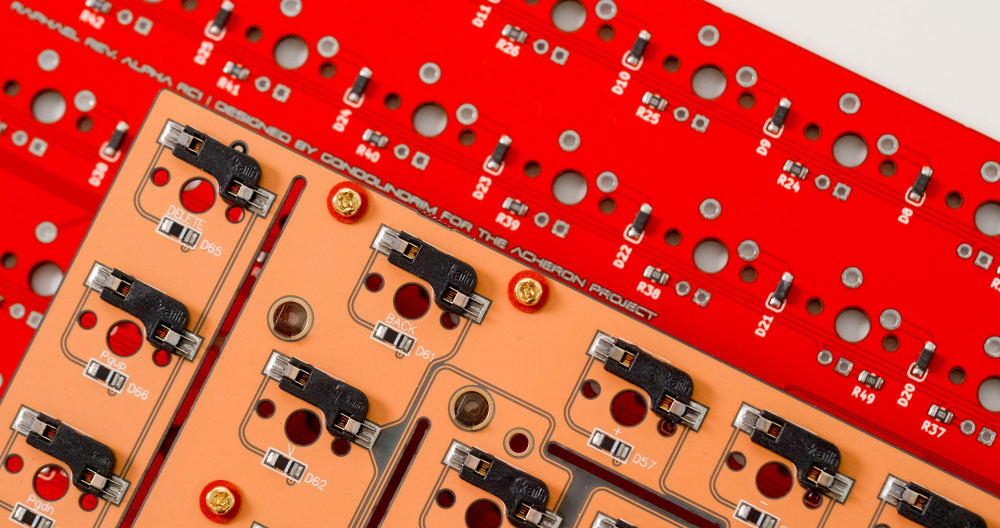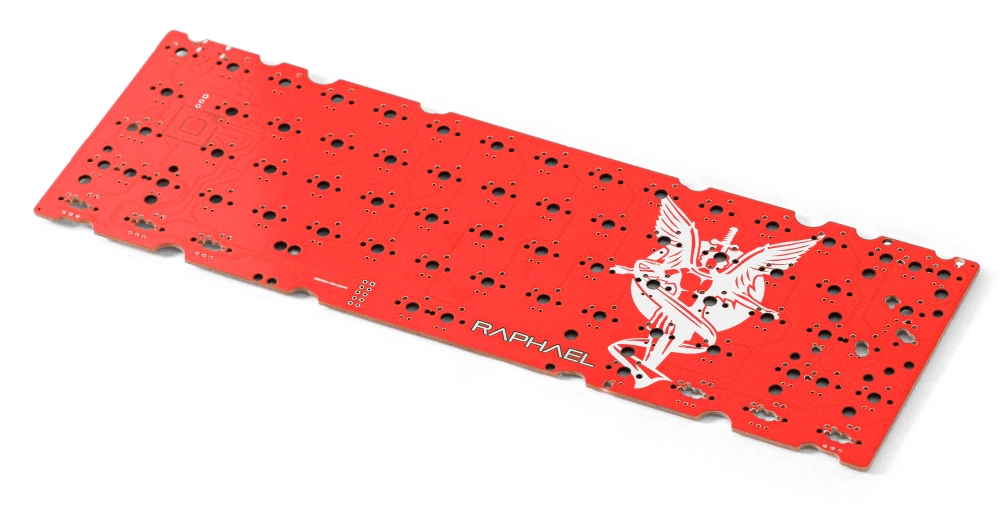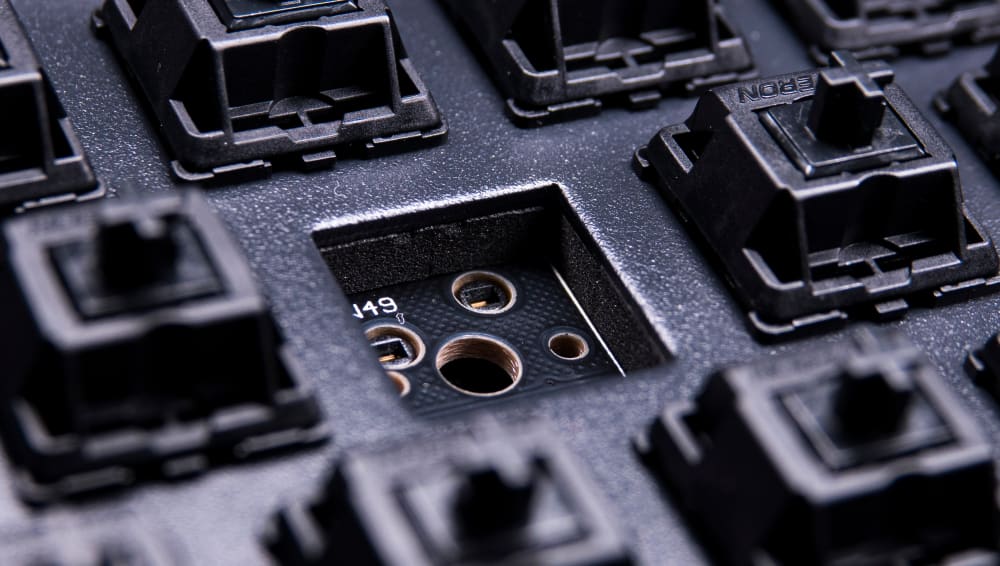Preston S.
Feb 2, 2023
•6 minutes
Hot-Swap Keyboard vs Soldered PCB: Does it Matter?
Mechanical keyboards are typically offered as hot-swap or solderable, but which option is best for your keyboard build? In this post we list some pros and cons.


Keychron Q5 Hot-Swap Keyboard
Sometimes it can be confusing to understand the difference between a hotswap and soldered PCB, but don't worry, today we are breaking it all down for you.
The easiest way to explain the differences between the two is by saying that a hot-swap PCB lets you take out switches whenever you like, while a soldered PCB doesn’t let you remove the switches without the use of proper tools. Firstly, let's briefly go over how hot-swap keyboards work.


PCB Hot-Swap Sockets
Hot-swap keyboards work by inserting the switch into a socket. This socket makes it so you can replace switches with ease and have very little risk involved so you don’t have to worry about accidentally damaging the PCB when building your keyboard. It is also very easy to maintain your switches and stabilizers since you can take them out of your board whenever you’d like. The downside to this is that you are locked to only certain layouts as most hot-swap PCBs do not support more than the layout provided to you originally. This might not be a problem for most people, but if you wanted a split space bar or a stepped caps lock key, there is a high chance that hot-swap PCBs won’t support it. Also if you put too much pressure when installing your switches, you can risk busting the socket, and the only way to fix that is to solder it back onto the PCB, so always support the PCB from the back when installing switches. Now let's talk about soldered PCBs.


Solderable PCB
Soldered Keyboards work by inserting the switch into the PCB and use a tool called a soldering iron to solder which fuses with the PCB creating a strong electrical bond. The benefit of using a soldered keyboard is basically that you have a wide variety of layout options to choose from and you get to learn how to solder/desolder which can be very fun to do. Now some people do say the soldered switches are more secure than hot-swap keyboards, but I have never really noticed this myself.
Like with hot-swap PCBs, there are some downsides to soldering as well. Soldering your keyboard can potentially lead to damaging your PCB if you aren’t careful or don’t really know what you are doing so I recommend practicing first before attempting it on a more premium board. They also lack the ease of use that hot-swap keyboards provide. It is also a lot harder to tune your stabilizers as if you realize last second that your stabilizer isn’t properly tuned, you have to desolder the switch just to fix it.


Close-Up Hot-Swap PCB Socket
At the end of the day, there are pros and cons for both hot-swap and soldered boards. The only thing you need to figure out is what matters most to you when building a keyboard. The ease of use that hot-swap provides or the variety of layouts that soldered PCBs provide. Below is a video by Keybonbon (Kinetic Lab's founder) comparing soldered and hot-swap PCBs: